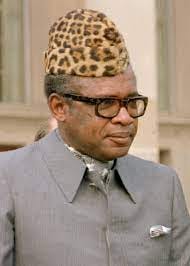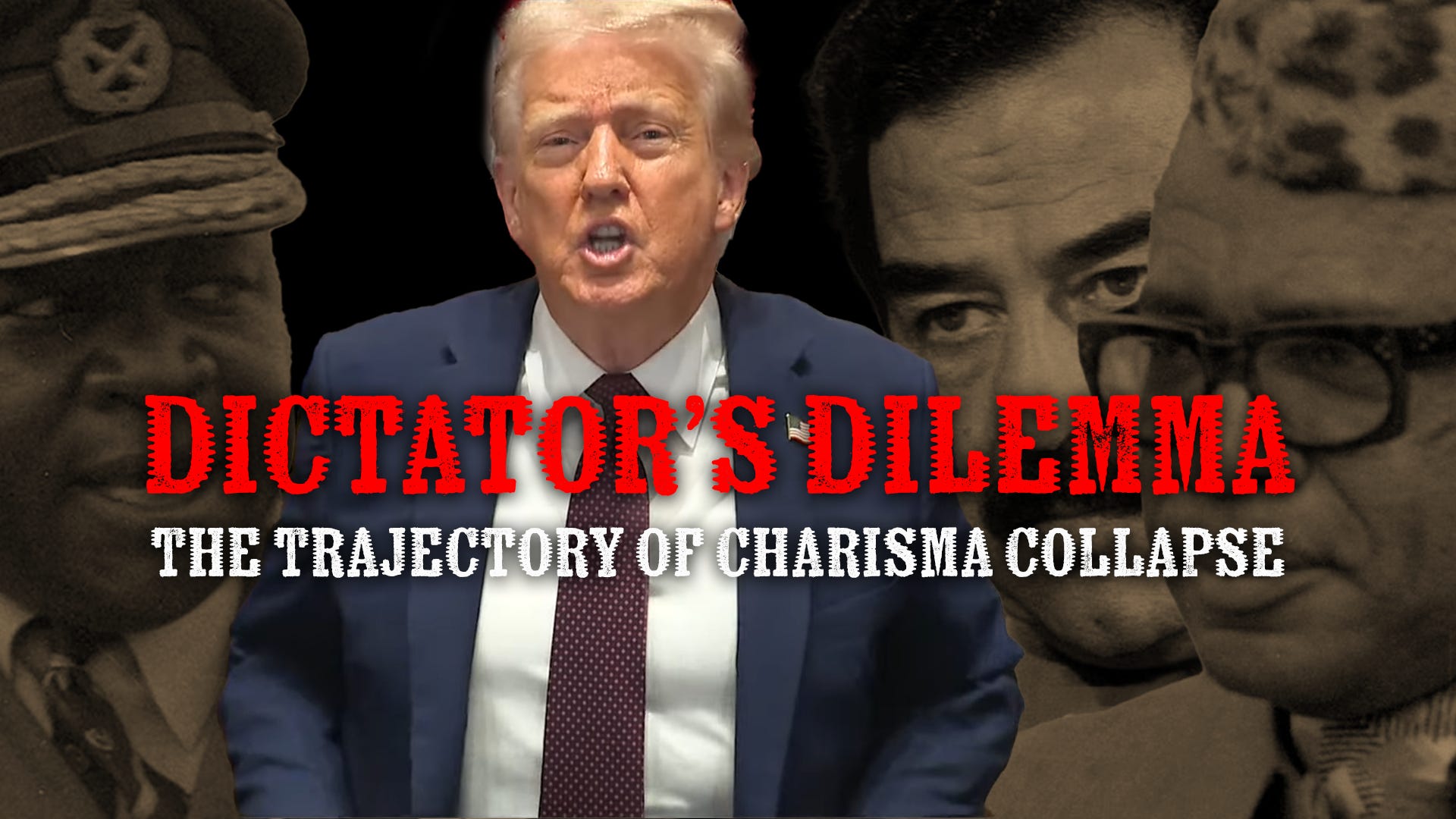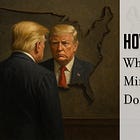Dictator’s Dilemma: The Trajectory of Charisma Collapse
Charisma sustains power—until it accelerates collapse.
Introduction
America is in a historically unique scenario. Through failures in governance, a generational attack on institutions, and a decade-long Russian-backed psychological warfare campaign, we reelected a malignant narcissist to power. However, in the second term, Donald Trump has degenerated into something far worse than in the first.
In his first term, while Trump bucked against the institutions of the American government and the Constitution, and did significant damage in his wake—especially in the form of three theocratic SCOTUS appointments and MAGA federal judges—he did not try to destroy the government until he lost the election to Joe Biden in November 2020. The violent attack on the Capitol on January 6th, 2021, was the physical manifestation of his narcissistic collapse and marked a rupture in his psyche.
In this article I will argue that what Donald Trump is attempting to do in his second term is deeply destructive, with massive human consequences, but cannot succeed long-term. This kind of regime has a clear downward trajectory, a clear set of fatal structural flaws, and is brittle by definition. The factors currently converging on the would-be Trump dictatorship represent a perfect storm that could be used as an opportunity if the dynamics of collapse are understood by those who remain in power.
Personalist Dictatorship
In Trump’s second term, under a massive weight of narcissistic injury because of his failure to escape his Epstein entanglement or achieve a Nobel Peace Prize, Trump is trying to do something manifestly impossible—to change the United States of America from the most powerful democracy in the world into a personalist dictatorship—inside of a year.
Here is Trump himself building a narrative that “a lot of people are saying maybe we like a dictator” three separate times in a 24-hour period—including a three-hour Cabinet meeting Tuesday morning.
A personalist dictatorship is a specific form of autocracy—contrasted with military juntas and one-party rule—in which the leader personally controls the levers of power and decision-making, sidelining institutional constraints.
In their 2018 book How Dictatorships Work, Barbara Geddes, Joseph Wright, and Erica Frantz describe personalism this way:
We refer to dictatorships in which the leader has concentrated power at the expense of his closest supporters as personalist. The defining feature of personalist dictatorship is that the dictator has personal discretion and control over the key levers of power in his political system…
Personalist dictators are thus powerful relative to other members of the elite, but not necessarily relative to society or to international actors.
The last line is particularly relevant to America’s scenario because the dictator in question is not attempting to seize power over a suffering low-income country, he is trying to convert a mature, dominant, constitutional republic into a personal fiefdom.
Here is a data-driven analysis of personalism in dictatorships by the authors.
A measure of personalism in dictatorships (PDF)
The rise of personalist dictatorships since the Cold War is a well-documented phenomenon. This is directly correlated to the ability of dictators to use technology to deliver propaganda and to enforce loyalty and conformance through surveillance, censorship, and the threat of state violence. Examples of this type of dictatorship: Idi Amin, Qaddafi, Mobutu in Zaire, Saddam Hussein, and increasingly, Vladimir Putin. On average, personalist dictatorships last twice as long as military juntas, but not as long as dictatorships controlled by one-party rule.



In her book Authoritarianism: What Everyone Needs to Know (2018) [PDF], Dr. Erica Frantz describes the six signs of personalization this way:
Narrowing of the Inner Circle
The ruler reduces the number of decision-makers, concentrating power among a handful of trusted allies.
Example: Putin’s Russia — estimates suggest only 20–30 individuals, mostly from military/security backgrounds, form his true governing circle.
Installation of Loyalists in Key Positions
Courts, security services, the military, and civil service are stacked with personal loyalists. Loyalty trumps technical competence.
Examples:
Hugo Chávez put Chavistas into the judiciary, state oil industry and the central bank.
Recep Tayyip Erdoğan used the failed 2016 coup as pretext for purge.
Promotion of Family Members
Close relatives are elevated to powerful positions, regardless of qualifications, to ensure trust and loyalty.
Example: Saddam Hussein.
Creation of a New Political Party or Movement
Leaders bypass or weaken traditional political establishments by creating a new vehicle for support.
Examples:
Alberto Fujimori founded Cambio 90 in Peru for his 1992 self-coup.
Chávez created the Fifth Republic Movement in 1997.
Use of Referendums or Plebiscites
Direct public votes (often rigged) are used to legitimize constitutional changes or consolidate authority.
Example: Nazi Germany, 1934 — referendum cementing Hitler’s absolute rule.
Creation of New Security Services
Leaders build loyal paramilitary or parallel security forces to counterbalance the regular military and deter coups.
Example: François “Papa Doc” Duvalier in Haiti.
Each of these signs other than the use of referendums so far, is present. Trump’s Cabinet meeting was not a government deciding on the best policy outcomes, it was personalist theater.
Dictator’s Dilemma
There is one structural problem that plagues all personalist dictatorships—often referred to as the “dictator’s dilemma.”
The dictator’s dilemma emerges when dissent is dangerous, citizens and elites hide their true views, and rulers can’t know if support is real or coerced.
Here is a well-researched 2024 analysis of the Dictator’s dilemma: the distortion of information flow in autocratic regimes and its consequences.
The basic trajectory of a regime caught in the dictator’s dilemma looks like this:
Phase 1: Consolidation through Fear and Flattery
The leader demands loyalty, not reality. Advisors quickly learn that survival depends on mirroring his desires. Institutions may appear intact on the surface, but their internal logic is broken—reality-testing is replaced by maximizing praise from the leader.Phase 2: Distortion and Echo Chambers
Propaganda and censorship (formal or informal) close the feedback loop. Citizens self-censor, advisors feed back distortions, and an alternate reality takes hold. Policies are created not to solve problems but to build an aura of invincibility and dominance.Phase 3: Overreach and Miscalculation
Blinded by his own myth, the leader embarks on reckless ventures. Foreign policy gambles, domestic crackdowns, and economic self-sabotage occur because no one dares speak honestly. Mistakes are repeated until they metastasize into disasters.Phase 4: Mounting Instability and Paranoia
Reality intervenes through economic crises, military failures, or social unrest. The leader cannot integrate this contradiction into his psyche, so paranoia mounts. Enemies multiply, scapegoats are chosen, and purges accelerate. What remains of institutions are hollowed out into state theater.Phase 5: Collapse or Transformation
The paradox resolves only with rupture. Some regimes implode violently; others limp into negotiated transition or hard succession. In rare cases, authoritarian deepening through surveillance or terror postpones collapse—but even then, the blindness remains, leaving the system permanently brittle.
In The Politics of Authoritarian Rule, Milan Svolik’s framework predicts that tensions with elites rise in personalist dictatorships as the ruler monopolizes decision-making and seizes elite authority, risking defections or coups, as reality intrudes on the illusion. In America, while the elite class has become more and more concentrated as income inequality mounts, and institutions have been weakened, it is not an unstable nation of the kind usually taken over by such men.
The challenge facing America’s personalist dictator is a vast array of institutions—all of which he is trying to pressure and control—which are not likely to completely cave to his demands, even as they try and fail to appease him. A prime example of this dynamic has already happened to Trump, when the most elite of them all, Elon Musk, tried to muscle in on Trump’s territory, leading to a massive breakdown in the relationship.
Cabinet of Decompensation
Tuesday, in a hastily assembled Cabinet meeting, Trump’s inner circle performed ritual offerings of praise and worship of the leader in a display truly worthy of a totalitarian regime like North Korea. I include it here not because I recommend watching it, but as a time capsule of the moment. It is an exhausting, and exhaustive, artifact of what’s gone wrong, and will go more wrong, with the nation.
This performance was a painfully stark example of several important processes about which I have recently written, including narcissistic collapse (and rupture), mimetic synchrony, and governmental decompensation.
First, Trump’s own speech during this meeting was textbook narcissistic collapse including: extreme grandiosity, projection and scapegoating; associative chaining of subjects to keep the appearance of control and dominance with no underlying logic; patriarchal narratives to support his self-image of control over industry and geopolitics; deep paranoia and scapegoating of opponents; and a complete alternate cosmology of the way the physical world works. Moreover, his repeated claims that people actually want to be invaded, or want a dictator, are an open attempt to break the basic social contract between the government and the people. It is rupture in plain sight.
Second, the people in his Cabinet were not mere sycophants or submissive, they were mimetic reflections of Donald Trump’s own feelings back to him—this was pure narcissistic fuel for a faltering ego under severe psychological stress.
As I’ve described, Trump’s “inner circle” are not behaving like independent, free-thinking adults, they are behaving like a school of fish, or a flock of swallows. They are acting in mimetic synchrony—emotionally mirroring the leader.
Third, as I’ve defined it, governmental decompensation is the phenomenon that occurs when a narcissistic leader fuses the government to his own emotional state by loading important positions with his own cult members—and then undergoes collapse. This leads to the organs of government themselves decompensating as if they were the leader himself.
In clinical psychology, decompensation refers to the breakdown of a person’s normal coping mechanisms under stress, leading to a sudden worsening of symptoms or loss of stable functioning.
Charismatic Collapse
To chart the likely outcome of this scenario, you have to look at how the leader derives his power, and what happens if it is severely diminished or disappears.
In the field of sociology, charismatic authority is a concept of organizational leadership wherein the authority of the leader derives from the personal charisma of the leader. In the tripartite classification of authority, the sociologist Max Weber contrasts charismatic authority (character, heroism, leadership, religious) against two other types of authority: (i) rational-legal authority (modern law, the sovereign state, bureaucracy) and (ii) traditional authority (patriarchy, patrimonialism, feudalism).
The strength of a charismatic leader lies in the irrational belief in his abilities to control the future through the sheer force of his will. His followers don’t follow, they believe—it is more of a religious bond than a political or a personal one. However, the weakness of charismatic authority comes from the fact that should that belief fade, so too does his power.
In nearly every case of a narcissistic, charismatic, personalist dictator, the objective reality of the world eventually destroyed him—after leaving behind a wake of suffering, terror, and death. The names of the men who suffered a charismatic collapse are a roll call of horror: Amin, Qaddafi, Hussein, Ceaușescu, and Mobutu.
Right now, the largest and most dangerous personalist dictatorship is Vladimir Putin’s—a man that Donald Trump held up a picture of in the Oval Office. The second most dangerous is arguably Kim Jong-Un’s in North Korea, who Trump just proudly announced a meeting with. This is no coincidence. Trump is making friends with regimes he admires—personalist kleptocratic dictatorships—because that’s what he has in mind for America.
The Trajectory Is Well-Described
Wednesday morning, following his Cabinet performance, the president posted a new wall of evidence of his plan for a personalist dictatorship . Trump promises RICO arrests of “Radical Left… Violent Protesters” using an antisemitic Soros trope, brags about fundraising $1.5 billion despite not being electable again, and wants to control the talent negotiations of NBC Late Night.



To compare the standard trajectory for personalist dictatorships to where America is now, let’s briefly review each phase.
Phase 1: Consolidation through fear and flattery.
Already well underway. The only metric important to Trump is submissiveness to his will—anyone who demonstrates independence is cast out.
Phase 2: Echo chamber governance.
On full display. The Cabinet meeting was the physical manifestation of the echo chamber provided by Trump’s captured media and social media platforms like Truth and X.
Phase 3: Overreach and miscalculation.
Trump is effectuating this takeover very rapidly by any historic measure, even for nations that had far less institutional strength and flexibility. His deployment of the National Guard, his bombing of Iran, his sanctioning of wide-scale paramilitary violence against civilians through ICE, and his obvious cover up of the Epstein Files, have stretched many of his supporters thin.
Trump has already committed multiple deeply damaging errors, including self-harming tariffs, Putin’s willingness to give Trump a “peace deal,” the horrific anti-human bill he pushed through Congress, and a potentially catastrophic situation in Venezuela, just to start.
Phase 4: Instability and paranoia.
Trump is already exhibiting these traits psychologically, and the organs of government are behaving in synchrony. It is Trump’s paranoia of losing another election that drives his militarization of DC and plans to invade Democratic cities. And the FBI raid on John Bolton will just be the beginning of Trump’s retribution on his opponents.
Phase 5: Collapse or authoritarian deepening.
This is the fork in the road that we cannot yet predict. It seems clear from every psychological, behavioral, sociological, and political point of view that this situation is leading to a major inflection point, where the mystique of Donald Trump finally falls away and his ability to cope is destroyed. It is at this moment the long-term future of the American Experiment may finally be decided.
Here are a few examples of this trajectory playing out. In each case, the spell was broken by an error of overreach—and the man was dealt swift justice by his own people.
Mussolini ousted by his own Fascist Council (1943).
Saddam Hussein’s miscalculation in Kuwait (1990).
Qaddafi’s implosion when charisma collapsed (2011).
While a personalist dictatorship can survive for an extended period of time in a nation that is not accustomed to freedom, it is not clear at all that a nation with a proud tradition of liberty and independence will submit to it, regardless of the regime’s alleged legitimacy. It seems far more likely that we are watching a kind of black swan event, a set of extreme circumstances where the governing power of a powerful democratic nation has become nearly completely detached from the majority of its population.
Black Swans Can Create Opportunities
When a scenario unfolds at any level of human experience that escapes the normal rules of reality—i.e. a disruption—there is opportunity to be had. And the phenomenon of Trump’s deranged second term is truly unique in world history, in many ways the definition of a black swan.
From Britannica:
black swan event, high-impact event that is difficult to predict under normal circumstances but that in retrospect appears to have been inevitable.
When there is a discontinuity, something unexplainable by ordinary people, a black swan, the people who know more about what really happened usually gain the most from the ensuing chaos. Whether it’s on the stock market, or vulture capitalists after a disaster, those who expect unusual things to happen, usually gain the most when they do. This is the reason it’s important to understand the underlying process of our unfolding American disaster.
It may not be possible to stop what is likely to be a violent rupture in the American republic. There is no reason to believe Donald Trump is going to leave his militarized compound, regardless of elections. There is every reason to believe he is going to continue to try to turn America into a regime like 1970s Uganda, 1980s Iraq, or 2010s Russia. However, there is every reason to believe he won’t succeed, at least not for long.
How well we predict the downfall of this uniquely dangerous figure in American history, and prepare to influence the aftermath, may determine whether we have a chance to return to something like America, again.
“A republic, if you can keep it.”
If you are able to help me continue my work, please consider upgrading to a paid subscription. It really means a lot. Thank you!
Here are a few benefits to upgrading:
Live Zoom call each Sunday
Ability to comment and access all content
Wonderful, supportive community
Helping independent journalism fill in the gaps for our failing media
Thank you for reading and sharing my work. Grateful for your support.
If you’d like to help me with expenses, here is my DonorBox. 💙
If you’d like to help with my legal fees: stopmikeflynn.com.
My podcast is @radicalizedpod & YouTube — Livestream is Thursdays at 4PM PT.
Bluesky 🦋: jim-stewartson
Threads: jimstewartson





Jim, as always you are ahead of the curve. Thanks for this very insightful and illuminating article.
https://en.wikipedia.org/wiki/Four_Pests_campaign
https://www.britannica.com/event/Cultural-Revolution/Rise-and-fall-of-Lin-Biao-1969-71
Fortunately for us, the Felon is 79 years old. Unless they are going to stuff him and pump him with capabilities for AI interactions, we will soon be released from the delusions of a demented and aging ego-maniac.
We'll still have to deal with the fascists, the racists, the sexists, the religious creeps that want to control women, schools and what people think, the billionaires who could care less about the rest of humanity; but, what's that expression? Beggars can't be choosers. It's what we are going to have to deal with until enough adequate solutions for repair start appearing and working.
At least we won't have to see the pus and hear the mental inflammation day after day.